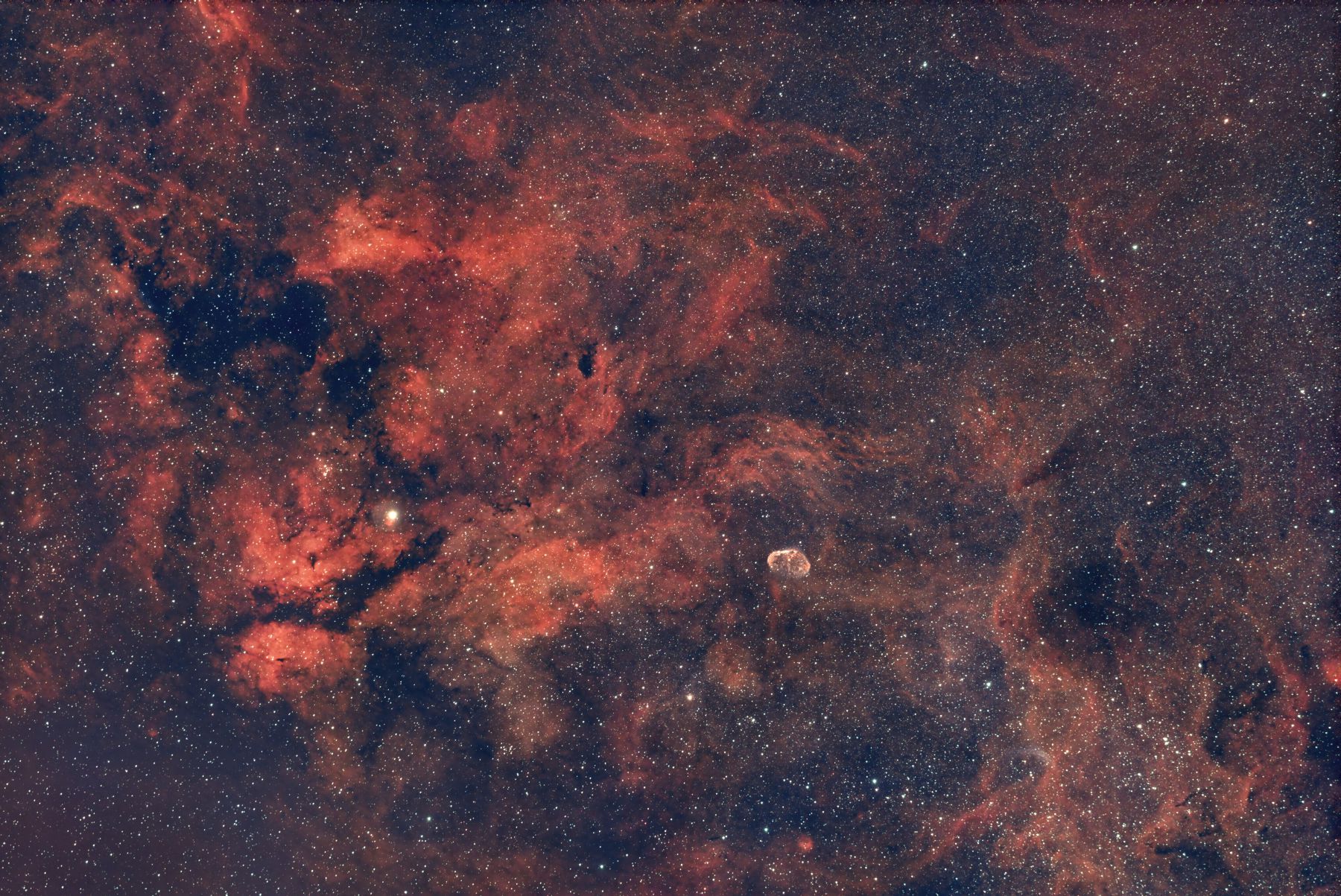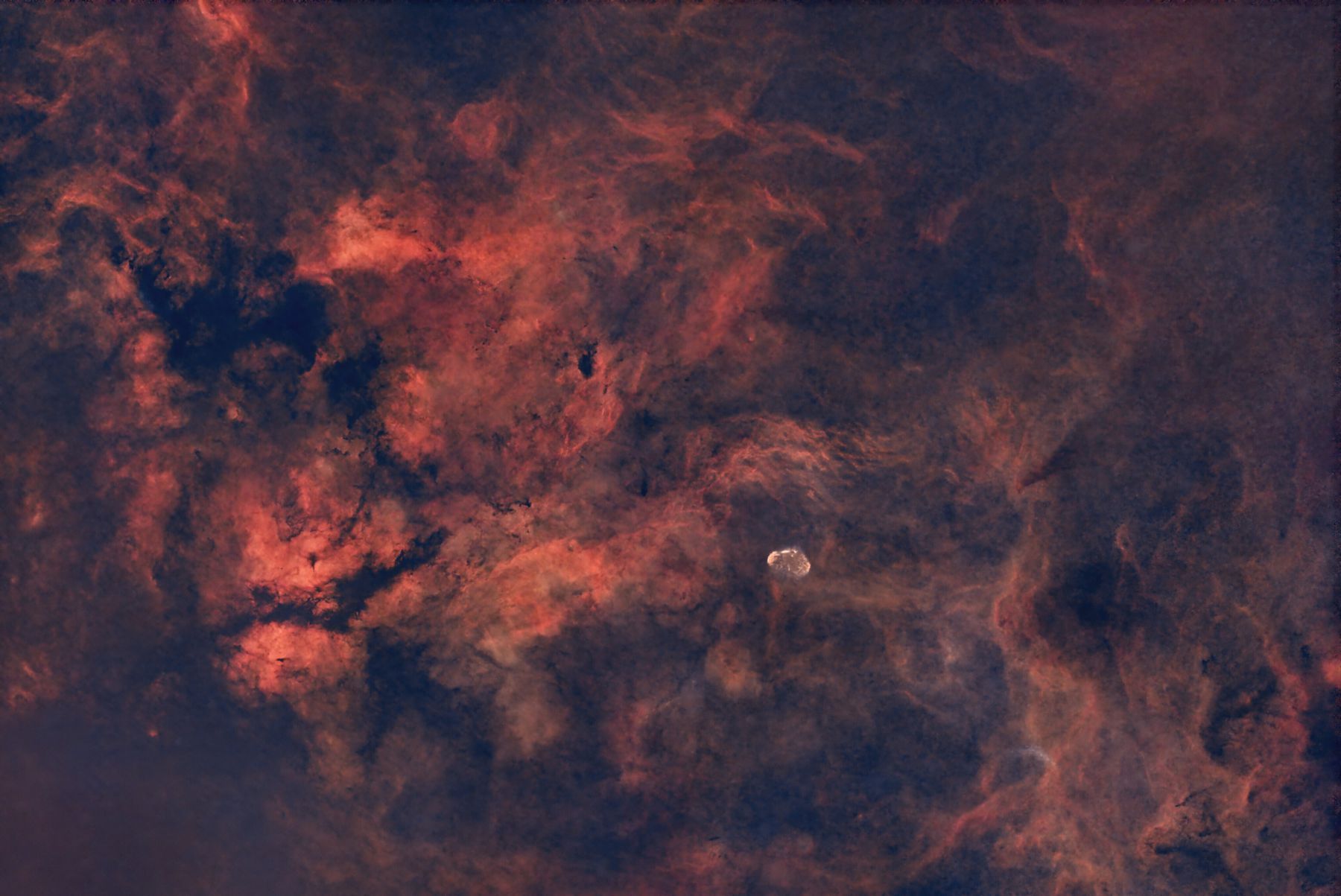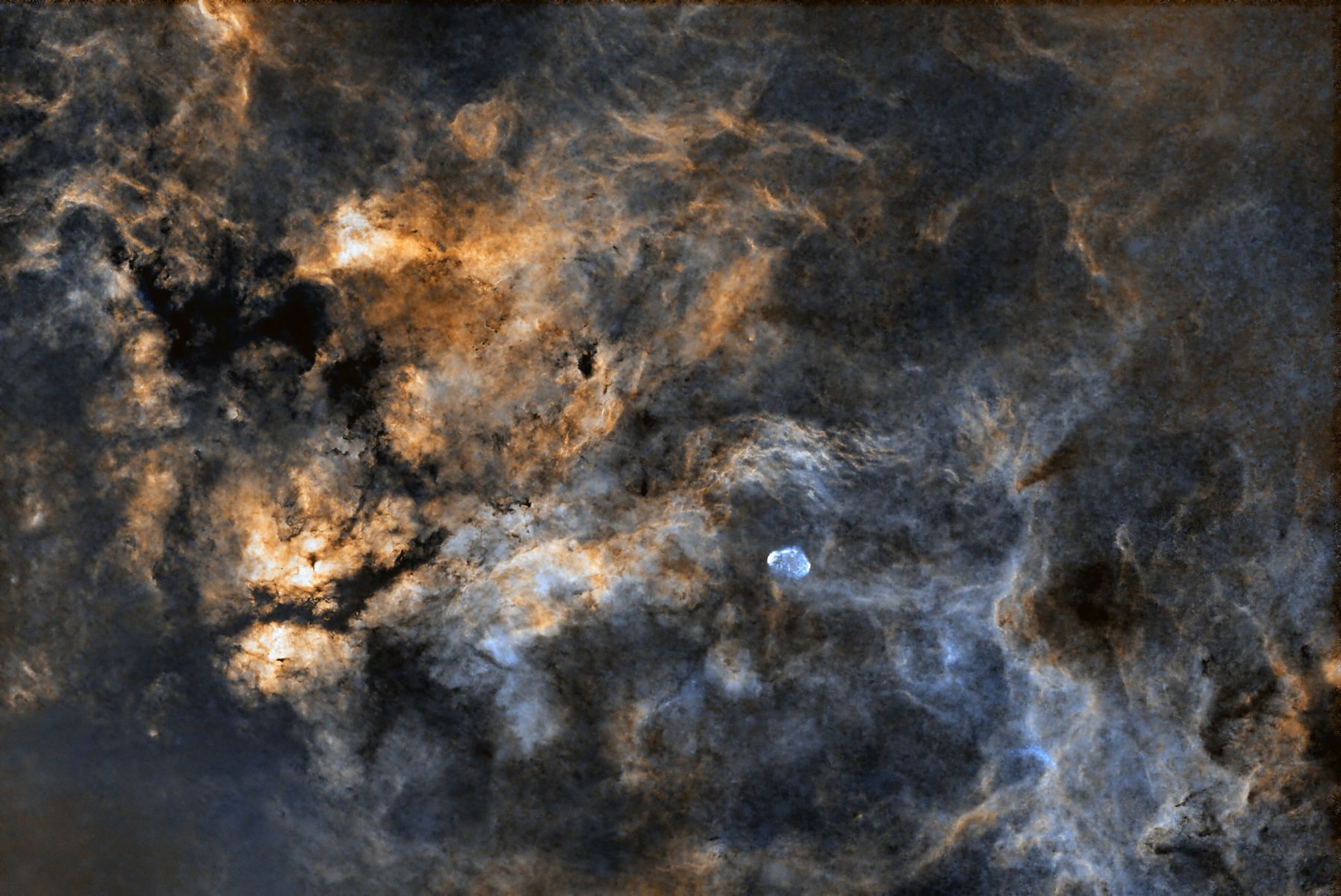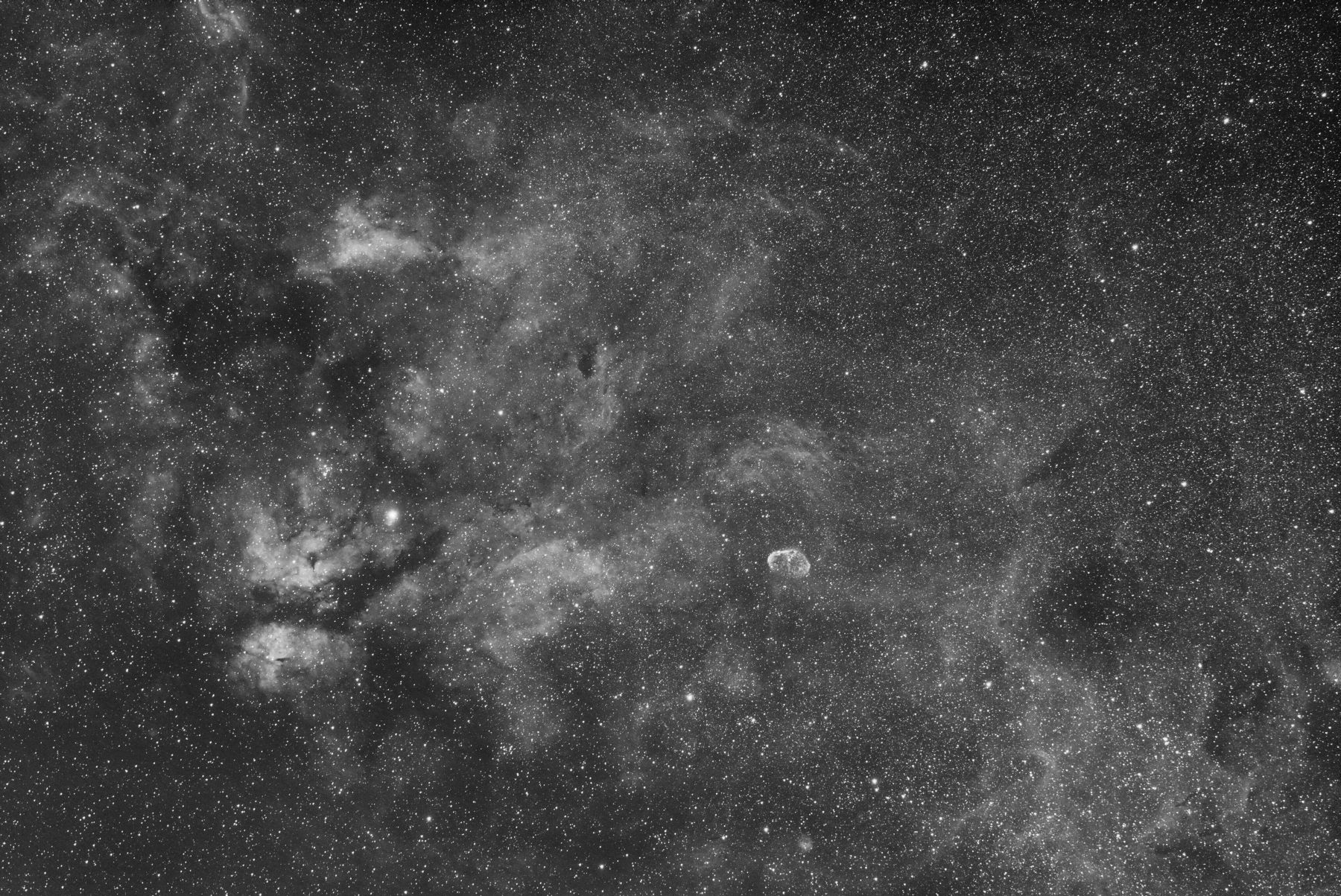Information...
Here is a widefield image of the region around the star Sadr (γ Cyg) in the constellation of Cyngus, with Sadr being the bright star on the middle-left hand side. Also in the image, to the middle-right, is NGC6888 - the Crescent nebula.
This image was taken with a Canon zoom lens and a narrow band filter that captures light from Hydrogen (Hα at 656.3nm & Hβ at 486.1nm) and doubly ionised Oxygen (OIII at 500.7 & 495.9nm). It has then been processed in a number of different ways, with the HSO palette being where Hα is mapped to the Red channel, Hβ & OIII are mapped to Blue, and a blend of Red/Blue is used to create the Green channel. The RGB images likewise make use of this artificial Green channel and for the greyscale image, the luminance has been extracted.






